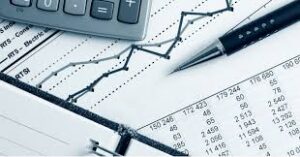Introduction
In civil court cases, the concept of damages is essential for plaintiffs seeking recovery from losses they have suffered. Damages can be classified into two main categories: economic and non-economic. Economic damages are directly tied to financial considerations, while non-economic damages encompass a broader scope, such as pain and suffering. In this comprehensive guide, we will explore the differences between these two types of damages, discuss the role of a forensic accountant in determining them, and delve into their importance in civil litigation.
What are Economic Damages?
Economic damages refer to the financial losses that a plaintiff has suffered as a direct result of the defendant’s actions. These losses can be easily quantifiable and are meant to compensate the plaintiff for any financial hardship caused by the defendant.
Examples of economic damages include:
• Lost wages: If the plaintiff was unable to work due to the defendant’s actions, they may be entitled to compensation for the wages they would have earned during that time. This includes not only the wages lost during the period of recovery but also any bonuses, commissions, and benefits that the plaintiff would have received.
• Medical expenses: Medical bills resulting from the defendant’s actions can be claimed as economic damages. This includes expenses for hospital stays, surgeries, medications, physical therapy, and any other treatments required for the plaintiff’s recovery.
• Property damage: If the defendant caused damage to the plaintiff’s property, the cost of repair or replacement can be considered economic damages. This might include damage to a vehicle, home, or other valuable possessions.
• Loss of earning capacity: If the plaintiff’s ability to earn income is permanently affected, they may be entitled to compensation for future lost wages. This is typically calculated by comparing the plaintiff’s projected earnings before the incident with their estimated earnings after the incident, taking into account factors such as age, education, and work experience.
Calculating economic damages involves a thorough analysis of financial records, invoices, and other documentation to determine the exact amount of money lost. Forensic accountants play a crucial role in this process, as they possess the expertise needed to accurately assess and quantify financial losses. They may also be called upon to testify in court as expert witnesses, providing an in-depth explanation of their findings and methodology.
Economic damages are important because they help restore the plaintiff’s financial position to what it would have been had the defendant’s actions not occurred. They provide a tangible measure of the harm caused and ensure that the plaintiff is adequately compensated for their losses. Additionally, economic damages can serve as a deterrent to negligent behavior, as they hold individuals and companies financially responsible for their actions.
What are Non-economic Damages?
Non-economic damages, on the other hand, refer to the intangible losses suffered by a plaintiff that are not directly tied to financial considerations. These damages are more subjective and can be more challenging to quantify.
Examples of non-economic damages include:
• Emotional distress: The psychological impact of the defendant’s actions on the plaintiff can be considered non-economic damages. This may include anxiety, depression, or post-traumatic stress disorder (PTSD) resulting from the incident.
• Pain and suffering: Compensation for the physical pain and emotional suffering the plaintiff experienced as a result of the defendant’s actions. This might include chronic pain, discomfort, or mental anguish that the plaintiff has endured or will continue to endure in the future.
• Loss of consortium: The impact on the plaintiff’s relationship with their spouse or partner due to the defendant’s actions. This might include the loss of companionship, affection, or sexual relations.
• Loss of enjoyment of life: If the plaintiff’s quality of life has been diminished due to the defendant’s actions, they may be entitled to compensation for this loss. This can encompass a wide range of activities and experiences, such as hobbies, social interactions, and overall life satisfaction.
• Disfigurement and scarring: If the plaintiff has suffered permanent physical disfigurement or scarring as a result of the defendant’s actions, they may be entitled to compensation for the impact on their appearance and self-esteem.
Calculating non-economic damages typically involves a more subjective approach, as there are no set formulas or guidelines to follow. Factors such as the severity of the injury, the plaintiff’s age, and the impact on their overall life can all play a role in determining the appropriate amount of non-economic damages. Juries are often asked to use their judgment in assigning a monetary value to these intangible losses.
While forensic accountants may not play a direct role in calculating non-economic damages, their expertise in analyzing financial data and economic damages can provide valuable context in assessing the overall impact of the defendant’s actions on the plaintiff’s life. In some cases, forensic accountants may be asked to evaluate the potential economic consequences of non-economic damages, such as the costs associated with therapy or rehabilitation.
The most significant difference between economic and non-economic damages lies in their scope and quantifiability. Economic damages directly relate to financial losses and can be easily measured, while non-economic damages encompass a wider range of subjective losses that are more challenging to quantify. However, both types of damages are equally important in ensuring that plaintiffs are fairly compensated for the harm they have suffered.
The Importance of Accurate Damage Assessments
Accurate assessments of both economic and non-economic damages are crucial in civil litigation, as they can significantly impact the outcome of a case and the amount of compensation awarded to the plaintiff. Inaccurate or incomplete assessments can lead to unfair settlements or verdicts, which may further harm the plaintiff or unjustly penalize the defendant.
A forensic accountant’s expertise in analyzing financial data and understanding the nuances of economic damages is invaluable in ensuring that damages are accurately calculated and presented in court. Their ability to communicate complex financial concepts in a clear and concise manner can also help juries and judges better understand the financial impact of the defendant’s actions on the plaintiff’s life.
Conclusion:
Understanding the difference between economic and non-economic damages is vital for plaintiffs seeking fair compensation in civil court cases. A forensic accountant’s expertise can be invaluable in accurately assessing and quantifying economic damages, providing a solid foundation for the plaintiff’s case. Additionally, their insights into the potential economic consequences of non-economic damages can help paint a more complete picture of the plaintiff’s overall losses. If you’re in need of an experienced forensic accountant to assess your business and personal economic damages, reach out to Joey Friedman today.
Have Joey Friedman CPA PA assess your business and personal economic damages today!
Don’t leave your financial future to chance; contact Joey Friedman today and take the first step towards securing the compensation you deserve. With his expertise as a Forensic Accountant, Expert Witness, and Business Valuation Expert, you can trust that your case is in capable hands.




